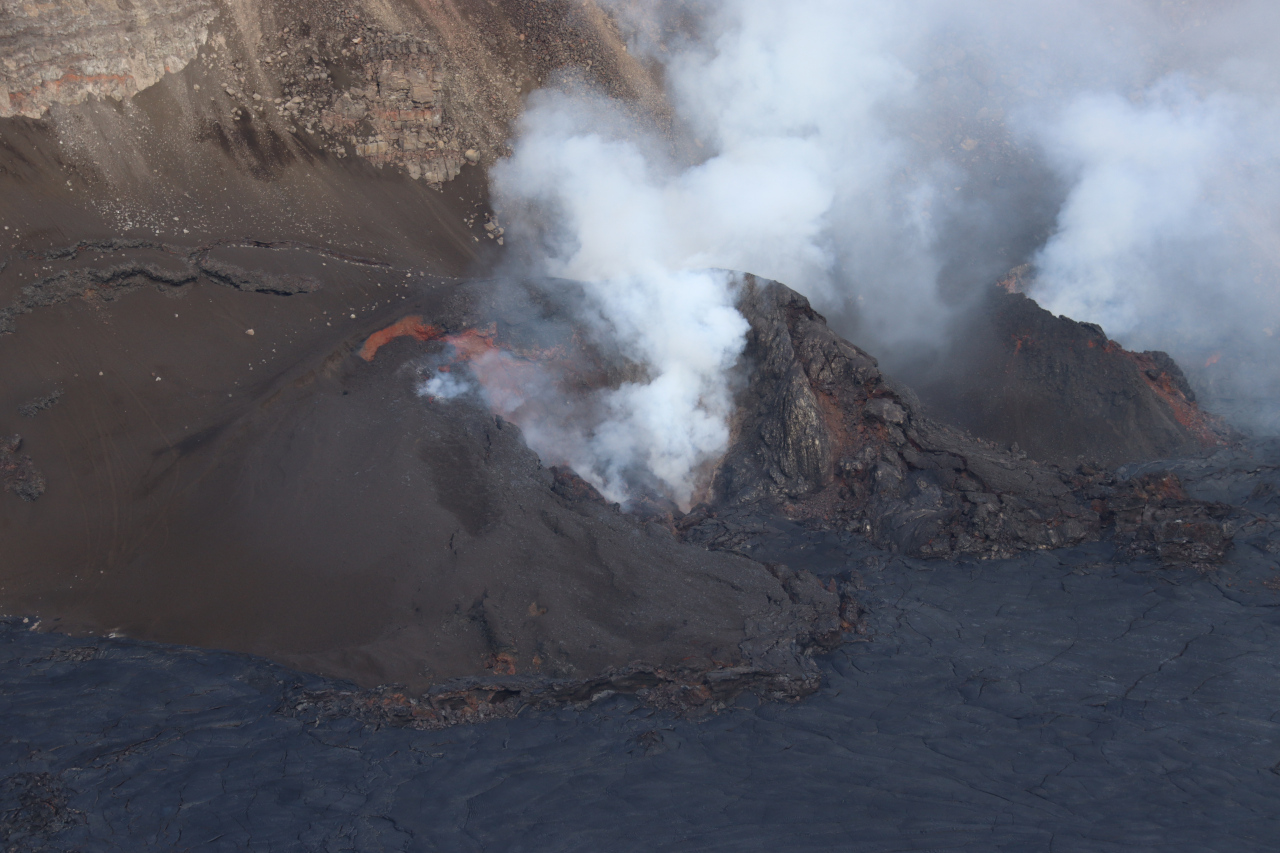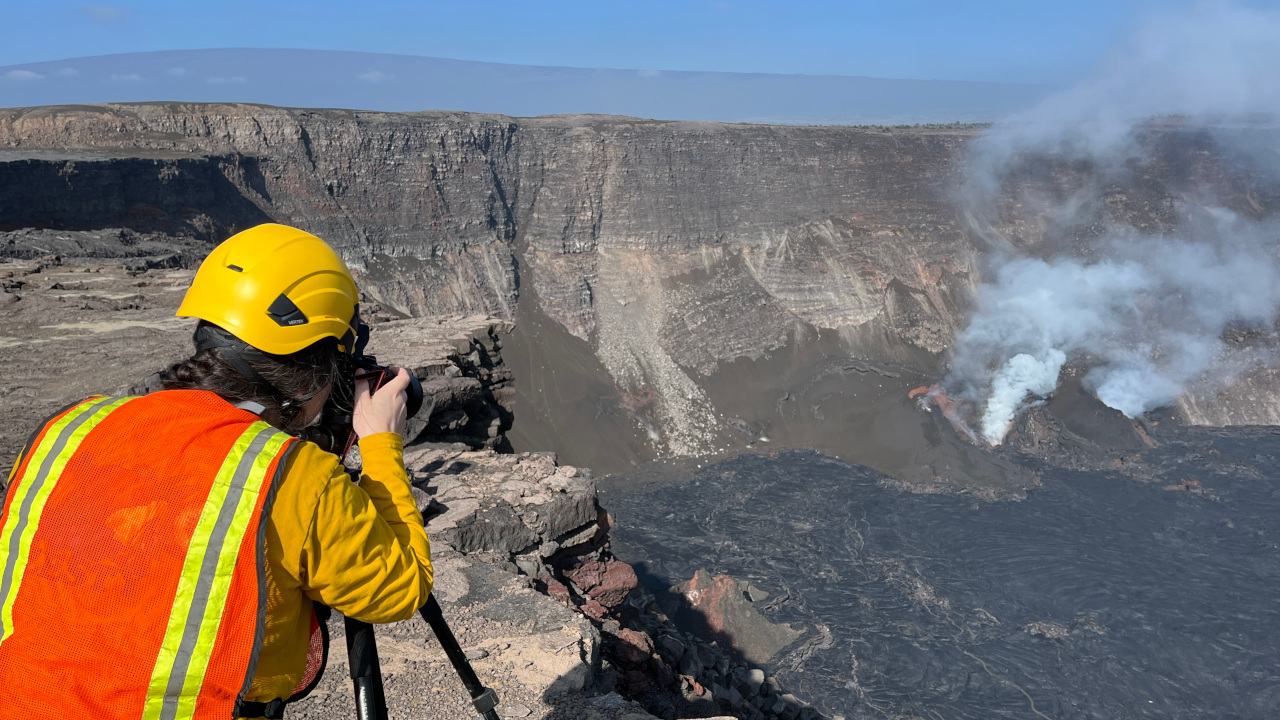
USGS: “A gas plume rises from the inactive vent at Kīlauea summit, two days after the pause in lava effusion. The vent was quiet, with no audible sound — a contrast with the sounds of lava fountaining, akin to loud crashing waves, on earlier days.” (USGS photo by M. Patrick)
(BIVN) – The eruption at Kīlauea volcano remains paused, although glow persists from the cones on the southwest side of the caldera.
No unusual activity has been noted along Kīlauea’s East Rift Zone or Southwest Rift Zone and the USGS Volcano Alert Level is at WATCH.
According to scientists with the USGS Hawaiian Volcano Observatory, both the inactive north and south vents “continue to emit volcanic gasses, contributing to vog that has been widespread across the Island of Hawai‘i since Saturday. The plume was being blown by Kona winds to the North and Northeast today.”
“No jetting or other sounds were heard by field crews and no lava flows observed — the eruption remains paused,” the geologists wrote, noting that “subsidence of the lava surface near the vents after the eruption waned was on the order of about 5 meters (16 feet).”
From the most recent USGS HVO update:
Summit Instrumental Observations: Seismicity at the summit over the last 24 hours remains low with 10 small detected earthquakes. Seismic tremor remains at background levels. Summit tiltmeters reversed from deflationary tilt to inflationary tilt around the same time that the lava fountain shut down. Summit tiltmeters have been relatively flat over the past 24 hours with only minor inflationary and deflationary signals. The last SO2 emission rate measured was ~30,000 tonnes per day on January 2 during fountaining. Emissions of SO2 remain elevated, but lower than those recorded during eruptive activity, and will be affected by wind conditions.
Summit Eruption Observations: Webcam images over the past 24 hour show glow at the vents that shut down on January 2 and 3 on the crater floor. The area where the automatic laser rangefinder is pointing on the crater floor increased in elevation by nearly 50 ft (15 m) over the eruption, but has gradually fallen by approximately 13 ft (4 m) since the lava fountain shut down at 8:40 pm on January 3. There has been no visible flow of lava back into the vent after the pause, and the gradual drop in lava level is more likely due to loss of gas bubbles (summit lavas are 50% or more bubbles) or very slow leaking of lava into the vent beneath the crust.
Analysis: The current eruption at the summit of Kīlauea is the sixth eruption within the caldera since 2020. These eruptions in the summit region have lasted for about a week to more than a year in duration. This eruption, like most others, started with vigorous lava and volcanic gas emission, but has now paused for the third time. Episodes 2 and 3 of this eruption were preceded by re-inflation of the summit; the rapid change from deflation to inflation at the onset suggests that another eruptive episode may occur in the coming days to weeks if the summit magma chambers repressurize sufficiently. Summit eruptions observed over the past 60 years have exhibited vigorous activity in the opening days which can episodically wax and wane, or drop over time to sustainable low effusion rates, or slowly diminish and end.


by Big Island Video News6:59 am
on at
STORY SUMMARY
HAWAIʻI VOLCANOES NATIONAL PARK - The inactive vents at the summit continue to glow and emit volcanic gas, as the eruption remains paused.